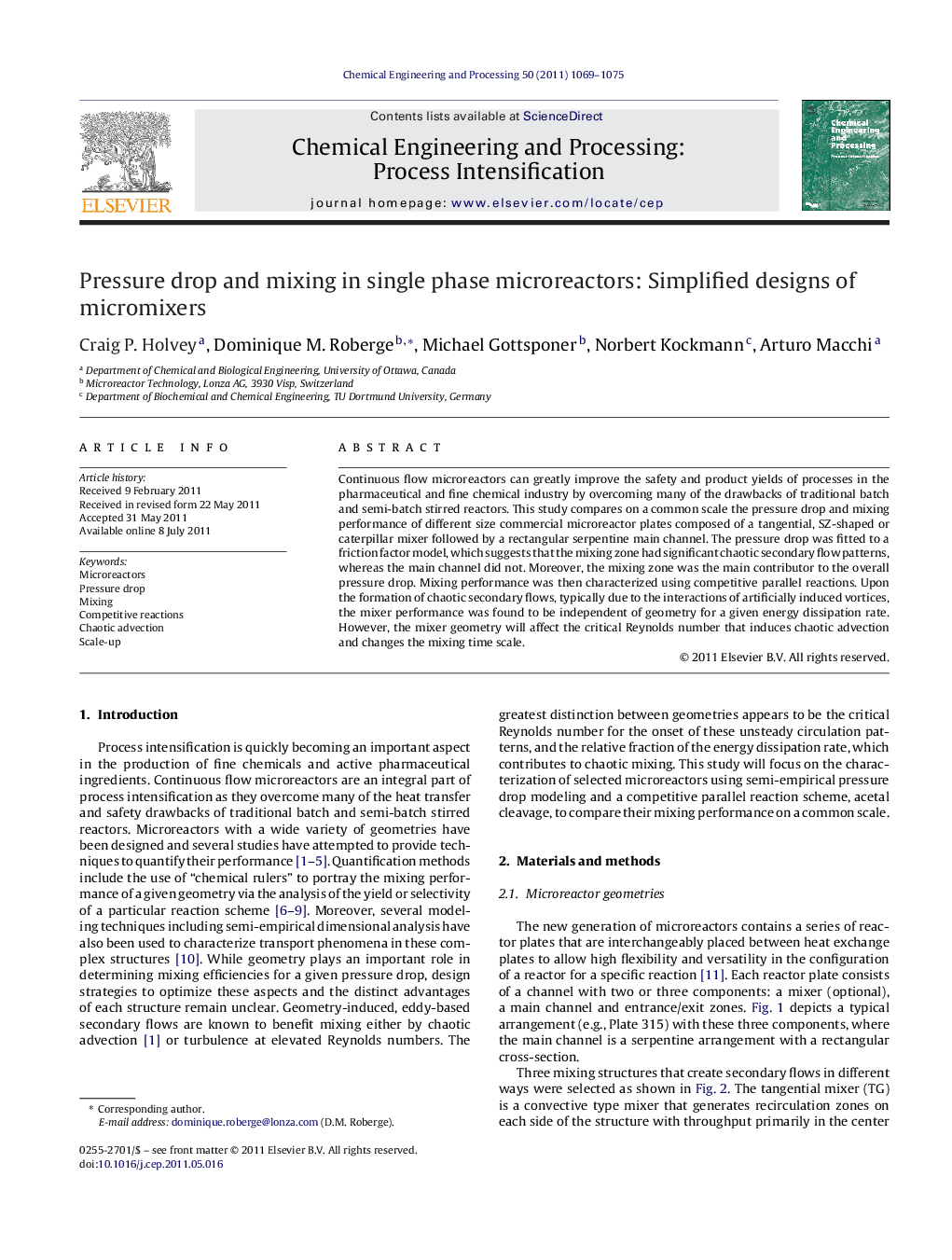| Article ID | Journal | Published Year | Pages | File Type |
|---|---|---|---|---|
| 687205 | Chemical Engineering and Processing: Process Intensification | 2011 | 7 Pages |
Abstract
Continuous flow microreactors can greatly improve the safety and product yields of processes in the pharmaceutical and fine chemical industry by overcoming many of the drawbacks of traditional batch and semi-batch stirred reactors. This study compares on a common scale the pressure drop and mixing performance of different size commercial microreactor plates composed of a tangential, SZ-shaped or caterpillar mixer followed by a rectangular serpentine main channel. The pressure drop was fitted to a friction factor model, which suggests that the mixing zone had significant chaotic secondary flow patterns, whereas the main channel did not. Moreover, the mixing zone was the main contributor to the overall pressure drop. Mixing performance was then characterized using competitive parallel reactions. Upon the formation of chaotic secondary flows, typically due to the interactions of artificially induced vortices, the mixer performance was found to be independent of geometry for a given energy dissipation rate. However, the mixer geometry will affect the critical Reynolds number that induces chaotic advection and changes the mixing time scale.
Related Topics
Physical Sciences and Engineering
Chemical Engineering
Process Chemistry and Technology
Authors
Craig P. Holvey, Dominique M. Roberge, Michael Gottsponer, Norbert Kockmann, Arturo Macchi,
